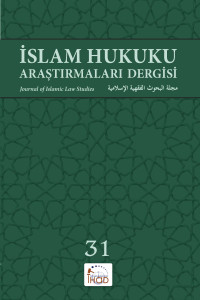Öz
This search deals with the judgements about pictures and sculptures of human beings in the terms of Islamic Juridical Science at the care of the issue whether the Picture of the Prophet or any human being can be drawn or his sculpture can be done in the context of Usûl and Furu Fiqh. In this context, the idea of Furu Fiqh is tried to be based in the name of the theory of Islamic law by analyzing the terms included in both Quran and the Hadiths such as icon, temâsil, sûret, tâğut, ensab … There are a great deal of verses of the Quran about pagans who will be punished violently. But there is no verse againts the pictures (drawings). While there is no clear knowledge about drawings in the Quran, it is being talked about threatening sentences-connected with doomsday for people who draw pictures and sculptures.
Öz
Araştırma, usûl ve furû fıkıh bağlamında Hz. Peygamberin resminin veya heykelinin yapılması sorunu merkezinde insan resmi veya heykeline dair hükümlerin İslâm hukuk biliminin genel teorisi açısından ele almaktadır. Bu bağlamda gerek Kur’ân-ı Kerim ve gerekse hadislerde yer alan put, temâsil, sûret, tâğut ve ensâb gibi kavramların analizleri yapılarak furû fıkha ait düşüncenin usûl yani fıkhın teorisi adına temellendirilmeye çalışılmaktadır. Kur’ân’da putperestlerin, şiddetli azaba çarptırılacağını söyleyen pek çok ayet bulunmakla birlikte, resim ya da heykel yapılamayacağına dair resim ve heykel aleyhinde herhangi bir ayet mevcut değildir. Kur’ân’da, resim veya heykel yapma hususunda net bir bilgi yokken, hadislerde özellikle kıyamet günü ile irtibatlı resim veya heykel yapana tehdit içeren cümleler söz konusudur.
Ayrıntılar
| Birincil Dil | Türkçe |
|---|---|
| Konular | Din, Toplum ve Kültür Araştırmaları |
| Bölüm | Araştırma Makaleleri |
| Yazarlar | |
| Yayımlanma Tarihi | 30 Nisan 2018 |
| Gönderilme Tarihi | 1 Ekim 2017 |
| Yayımlandığı Sayı | Yıl 2018 Sayı: 31 |



